march garden journal
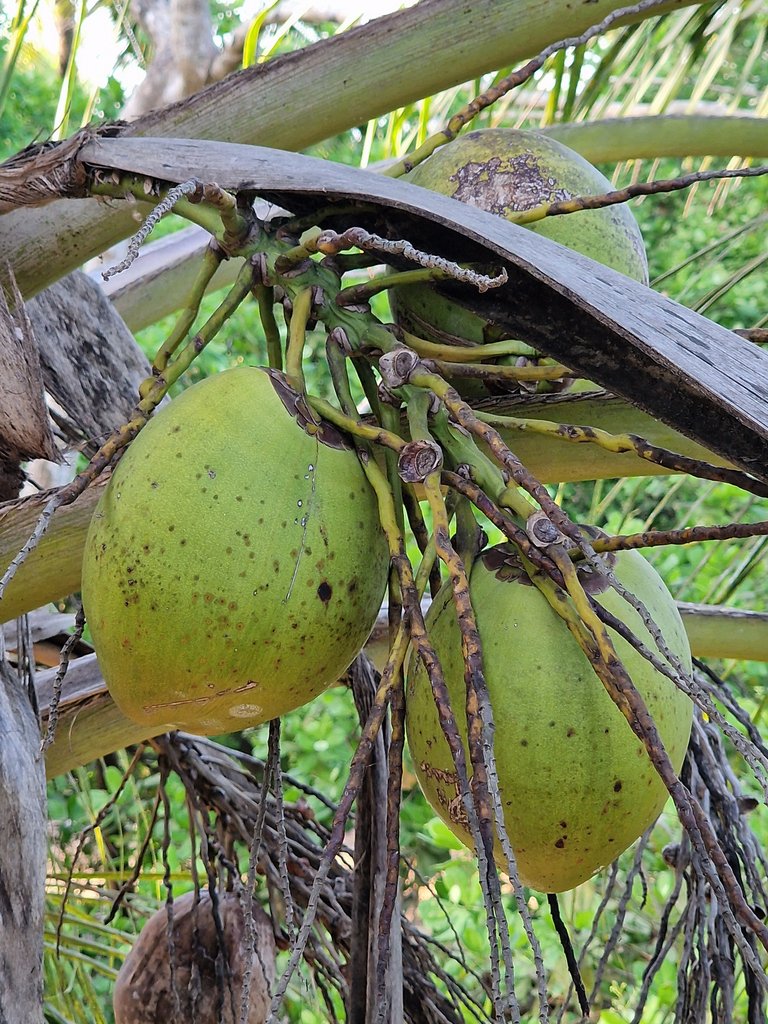 the main element in our garden is coconuts. they do well in the pure sand we have for soil and they continuously produce throughout the year regardless of season. one of the biggest benefits of having a garden here in the tropics is that there is always something in season. from our trees we get sapotas or ckickoos year round in addition to coconuts. on the other hand, the cashew and mango trees bear only once per year.
the main element in our garden is coconuts. they do well in the pure sand we have for soil and they continuously produce throughout the year regardless of season. one of the biggest benefits of having a garden here in the tropics is that there is always something in season. from our trees we get sapotas or ckickoos year round in addition to coconuts. on the other hand, the cashew and mango trees bear only once per year.
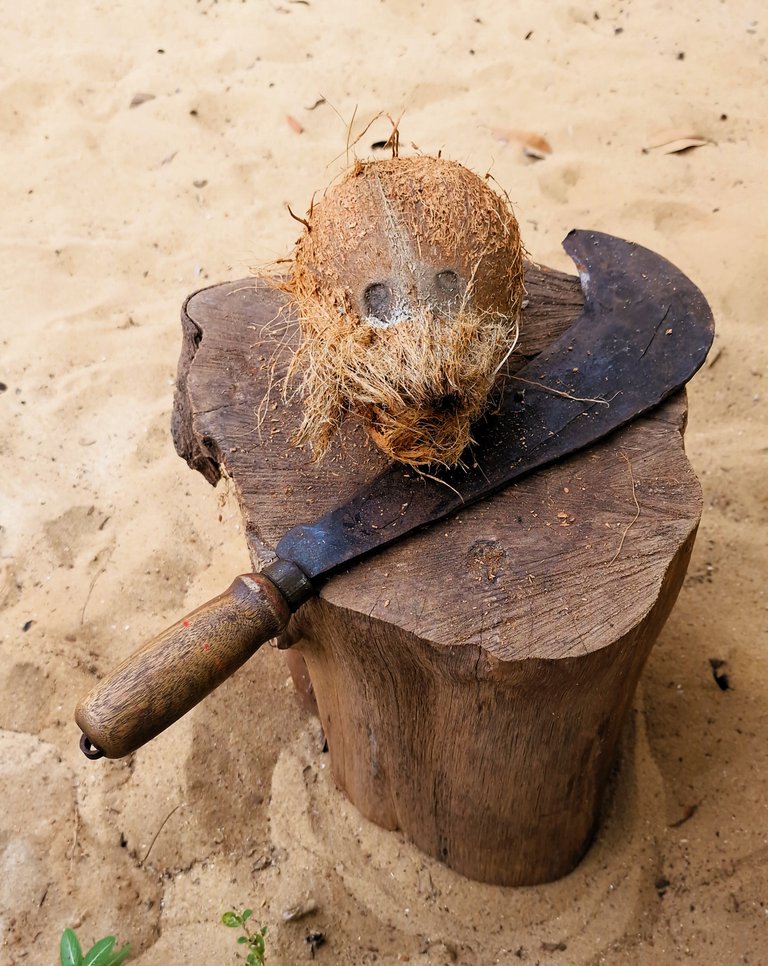 some of the coconut trees bear too few coconuts to make it worthwhile to climb and pick them. they fall when they are ready and we collect the ones we find. inevitably some of those are dry
some of the coconut trees bear too few coconuts to make it worthwhile to climb and pick them. they fall when they are ready and we collect the ones we find. inevitably some of those are dry
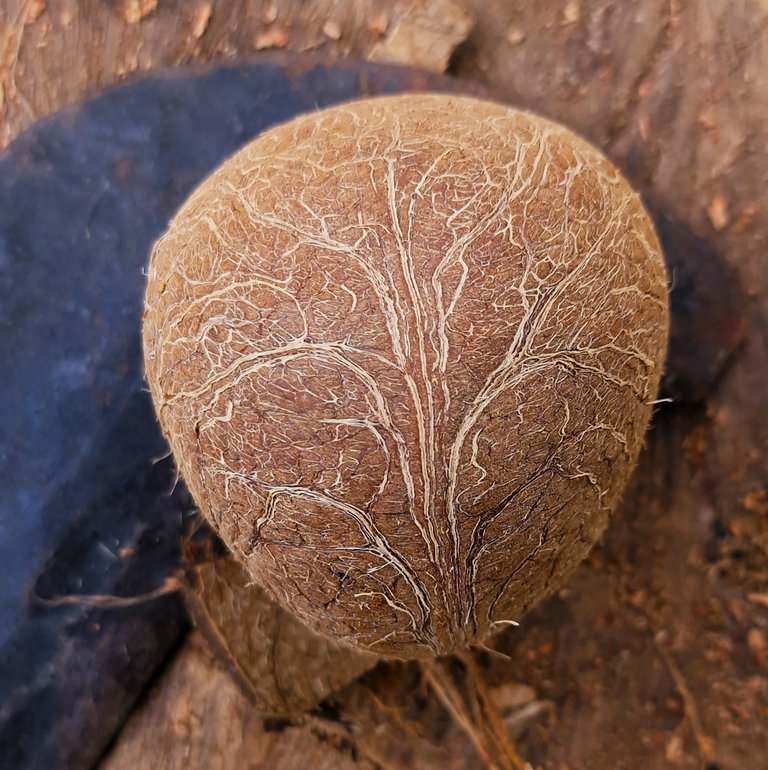 they are east to crack open and each has a unique design, no two are exactly the same
they are east to crack open and each has a unique design, no two are exactly the same
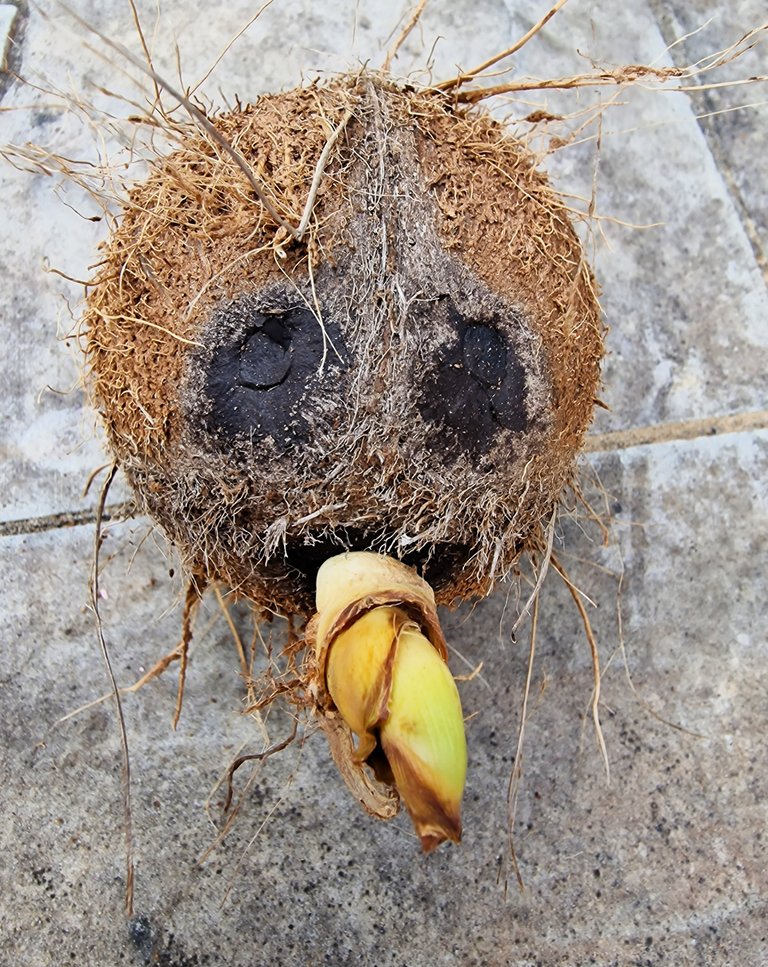 some few have sprouted, such as this impudent looking fellow here. the sprout always comes out of one of the three eyes and in theory can grow into a tree. in practice tough, once the outer husk is removed it is move difficult to grow them
some few have sprouted, such as this impudent looking fellow here. the sprout always comes out of one of the three eyes and in theory can grow into a tree. in practice tough, once the outer husk is removed it is move difficult to grow them
 before they get as far as that previous one as they sprout they develop what is called a coconut embryo or coconut apple inside. it's not visible until the hard outer shell is cracked open. these embryos. they are considered a delicacy and are quite popular many places.
before they get as far as that previous one as they sprout they develop what is called a coconut embryo or coconut apple inside. it's not visible until the hard outer shell is cracked open. these embryos. they are considered a delicacy and are quite popular many places.
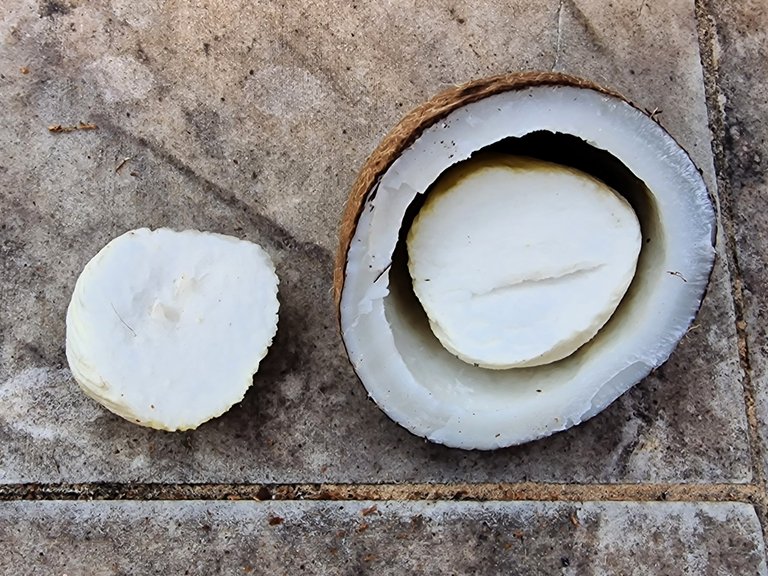 they are light and fluffy with a nutty but watery texture and are mildly sweet. they can be eaten as they are straight from the coconut or used as the featured ingredient in a variety of dishes
they are light and fluffy with a nutty but watery texture and are mildly sweet. they can be eaten as they are straight from the coconut or used as the featured ingredient in a variety of dishes
 in the sprouted coconuts, the flesh or copra is of a low quality but can be sun dried and pressed for oil
in the sprouted coconuts, the flesh or copra is of a low quality but can be sun dried and pressed for oil
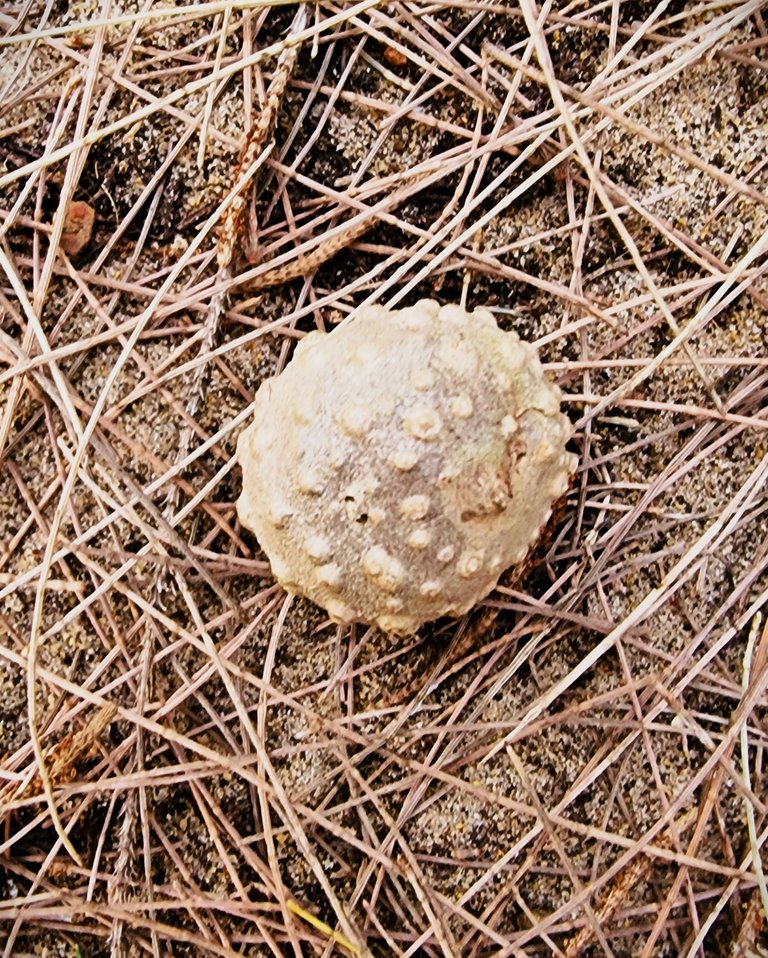 years ago there were no fences or compounds between the local properties here. our previous owners agreed with the neighbours to the north to plant a row of Casuarina equisetifolia trees to mark the border. we call the trees suru but have a number of descriptive common names such as horsetail she-oak, ironwood, beach casuarina, whistling tree and Australian pine. from these names we can derive that the wood is hard, the leaves are similar to long pine needles but also horsetails and they grow in beach sand and make a whistling sound in the wind. they were a logical choice, excellent as fuel and for making charcoal, great windbreakers, termite resistant and fast growing, despite the wood being very hard.
years ago there were no fences or compounds between the local properties here. our previous owners agreed with the neighbours to the north to plant a row of Casuarina equisetifolia trees to mark the border. we call the trees suru but have a number of descriptive common names such as horsetail she-oak, ironwood, beach casuarina, whistling tree and Australian pine. from these names we can derive that the wood is hard, the leaves are similar to long pine needles but also horsetails and they grow in beach sand and make a whistling sound in the wind. they were a logical choice, excellent as fuel and for making charcoal, great windbreakers, termite resistant and fast growing, despite the wood being very hard.
copious amounts of needles along with the 'cones' fall to the ground and make a nice layer on the sand, cooler and softer and generally more shady, relaxed and appealing than the harsh sand.
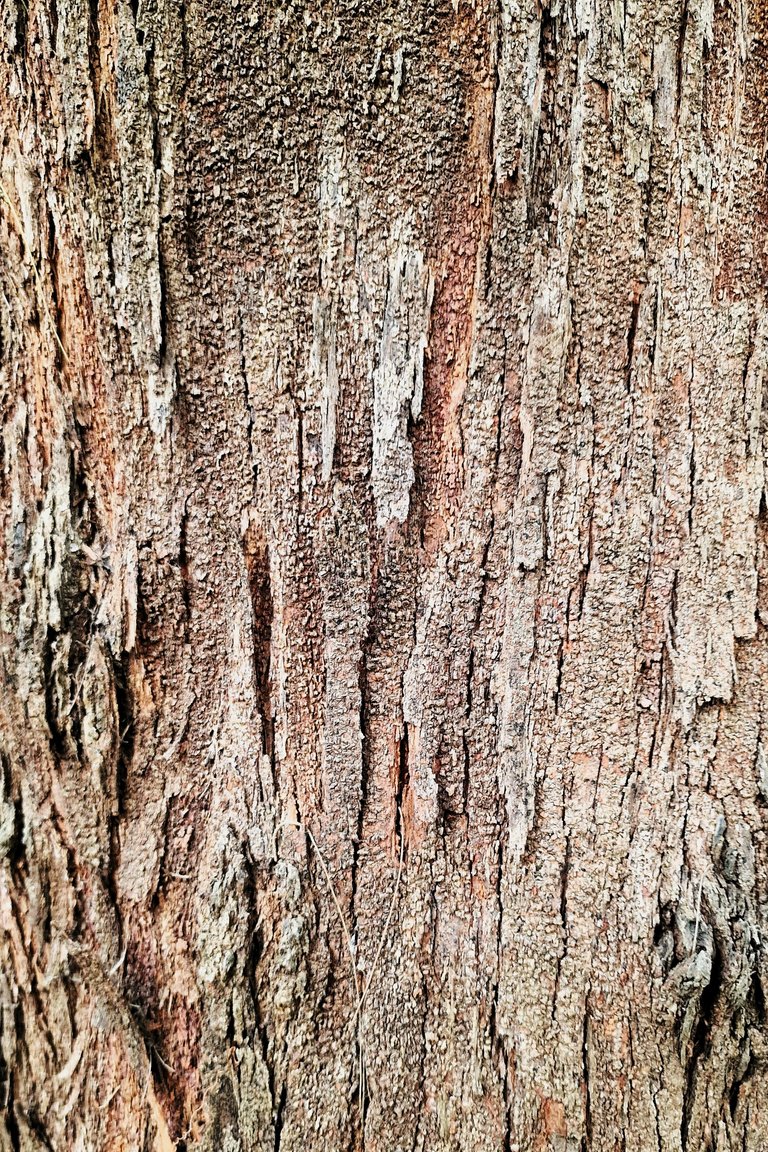 when i look at trees i like to study the bark, there's something about the texture that reveals a lot to trained eye.
when i look at trees i like to study the bark, there's something about the texture that reveals a lot to trained eye.
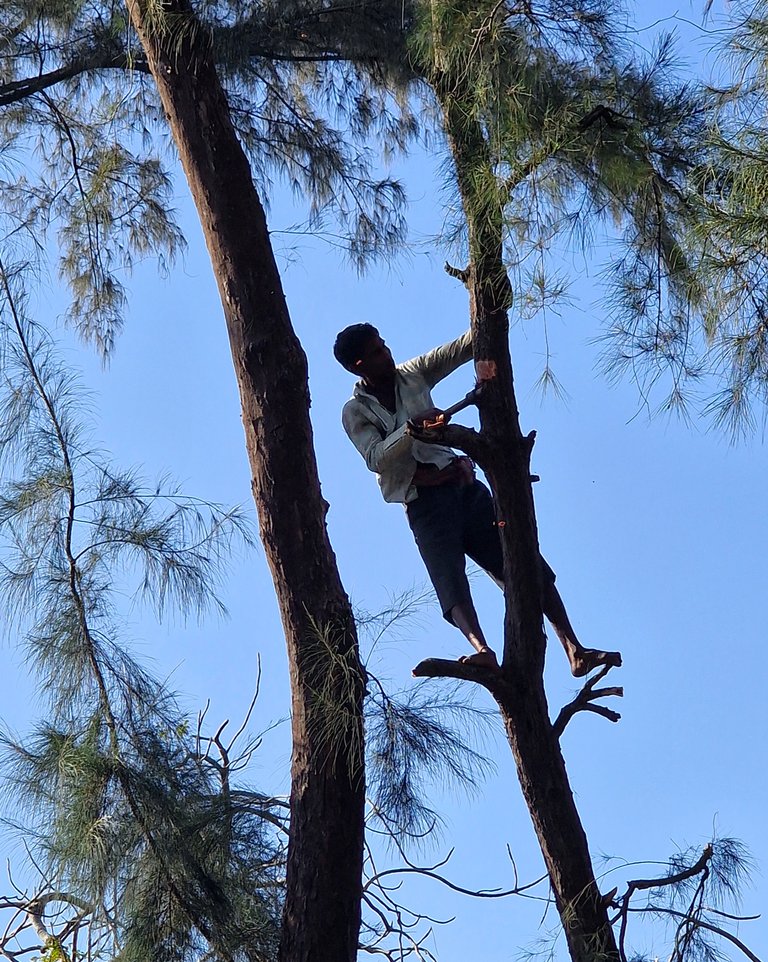 growing in sand entails that when they grow tall they are susceptible to being blown down during cyclones or the heavy monsoon winds. so to prevent them from crashing down on our house and other trees we hired a man to climb and chop off the top. first he chopped the lower branches with a chopper
growing in sand entails that when they grow tall they are susceptible to being blown down during cyclones or the heavy monsoon winds. so to prevent them from crashing down on our house and other trees we hired a man to climb and chop off the top. first he chopped the lower branches with a chopper
 and then with a chain saw cut the trunk about 8 meters high. an impressively perilous task with little concern for safety. this man is famous in the district for being able to land the fallen tree precisely in tight spots and indeed no other trees were harmed in any of the five he chopped
and then with a chain saw cut the trunk about 8 meters high. an impressively perilous task with little concern for safety. this man is famous in the district for being able to land the fallen tree precisely in tight spots and indeed no other trees were harmed in any of the five he chopped
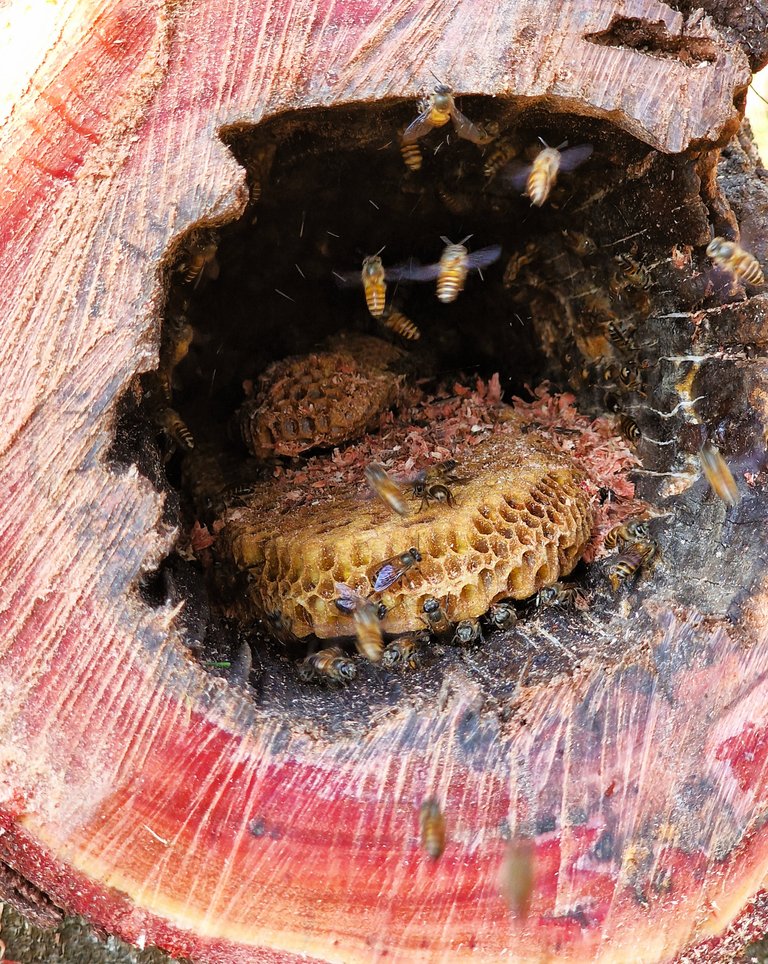 sections of the heartwood of these trees may be hollowed out by certain fungi creating living quarters for animals, birds and insects. the outer layers of the tree remain strong and healthy so this is a great example of how fungi contribute to biodiversity in an ecosystem. one of the chopped trees happened to have such a hollow and inside it was a young bees nest. our hired man instantly hoped to find wild honey but the honeycombs were full of eggs and larvae, indicating it was a relatively young hive
sections of the heartwood of these trees may be hollowed out by certain fungi creating living quarters for animals, birds and insects. the outer layers of the tree remain strong and healthy so this is a great example of how fungi contribute to biodiversity in an ecosystem. one of the chopped trees happened to have such a hollow and inside it was a young bees nest. our hired man instantly hoped to find wild honey but the honeycombs were full of eggs and larvae, indicating it was a relatively young hive
 surprisingly, the bees were not at all aggressive. perhaps they were in shock and busy doing damage control from the tree being chopped down. i was able to extract a whole honeycomb to inspect it.
surprisingly, the bees were not at all aggressive. perhaps they were in shock and busy doing damage control from the tree being chopped down. i was able to extract a whole honeycomb to inspect it.
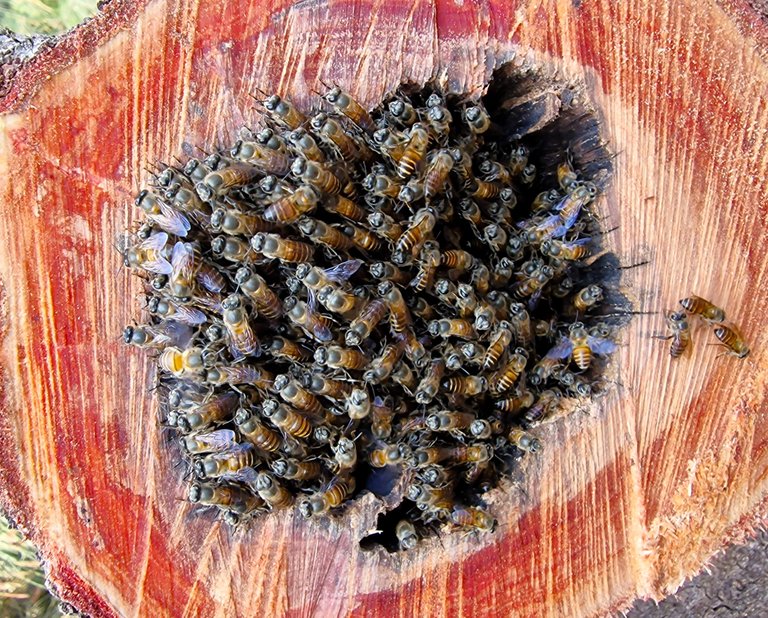 soon the bees gathered into a swarm inside the hollow and we left them to find a new home. i'm sure there were other hollow spots in the remaining trees and they managed to find a suitable place. it's not an easy life for bees though as several species of birds, in particular green bee eaters reside in the garden and both chestnut-headed and blue-bearded bee eaters visit
soon the bees gathered into a swarm inside the hollow and we left them to find a new home. i'm sure there were other hollow spots in the remaining trees and they managed to find a suitable place. it's not an easy life for bees though as several species of birds, in particular green bee eaters reside in the garden and both chestnut-headed and blue-bearded bee eaters visit
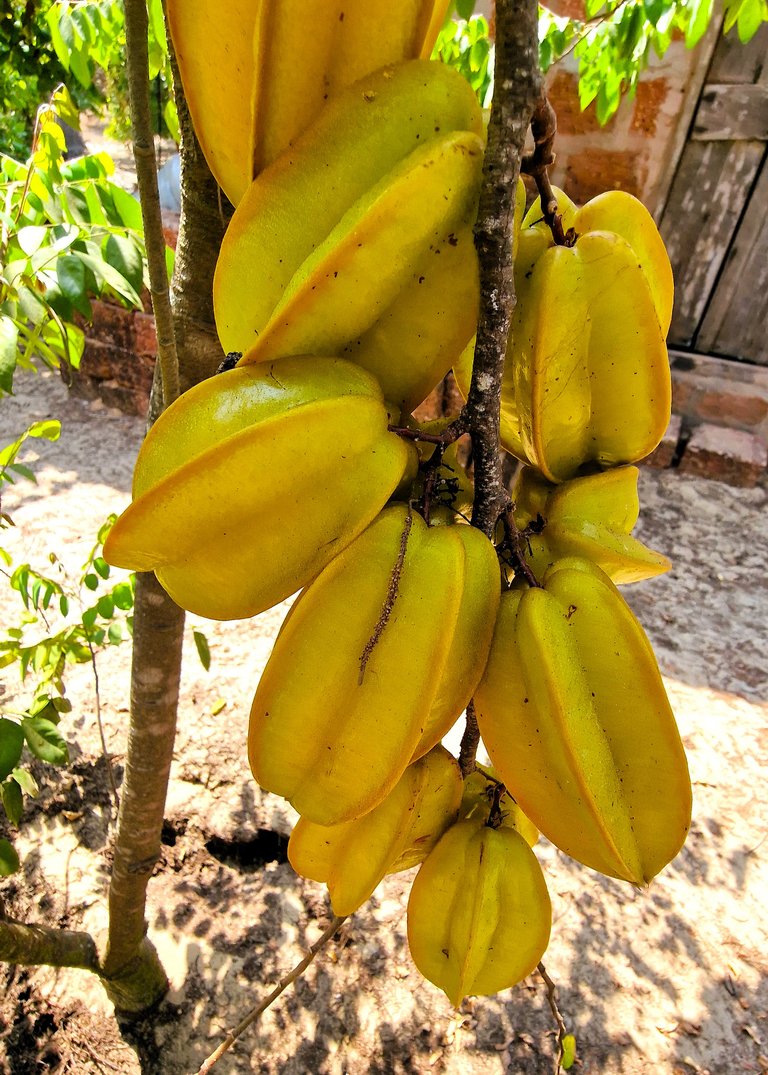 our young star fruit or carambola tree bears an astounding amount of fruit for its size. it bears twice a year and now the fruit is ripe. a real treat
our young star fruit or carambola tree bears an astounding amount of fruit for its size. it bears twice a year and now the fruit is ripe. a real treat
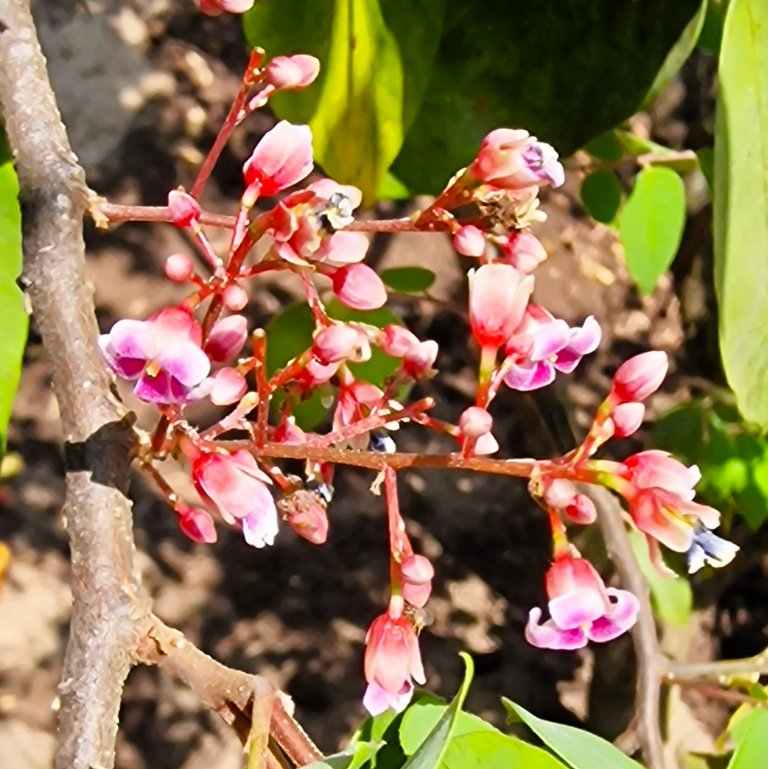 and the tree has already started flowering again. the flowers aren't much to look at but they result in dense clusters of the stellate fruit
and the tree has already started flowering again. the flowers aren't much to look at but they result in dense clusters of the stellate fruit
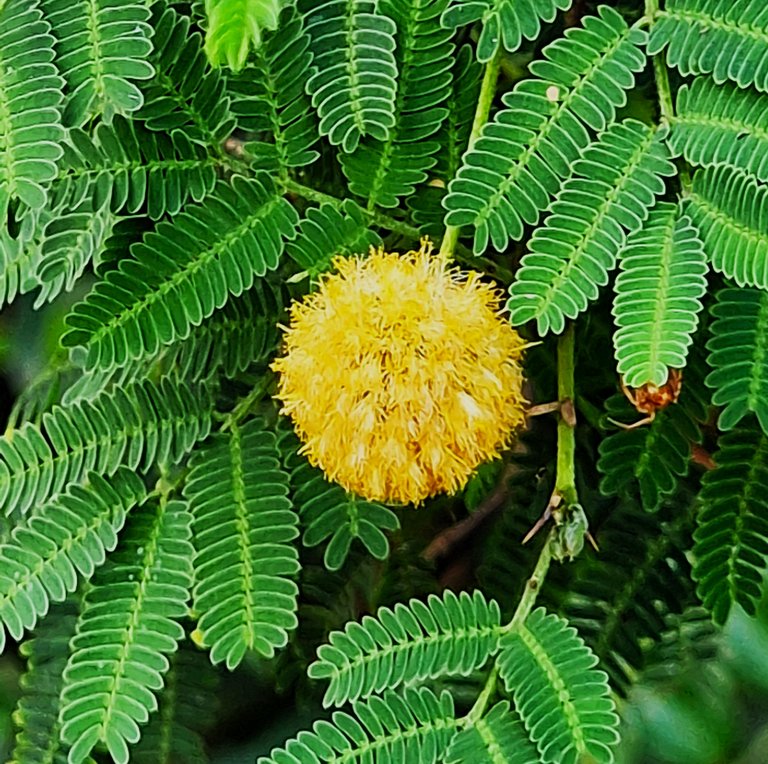 of course the garden is not all trees. given the poor soil there are a surprising number of medicinal and flowering plants that thrive
of course the garden is not all trees. given the poor soil there are a surprising number of medicinal and flowering plants that thrive
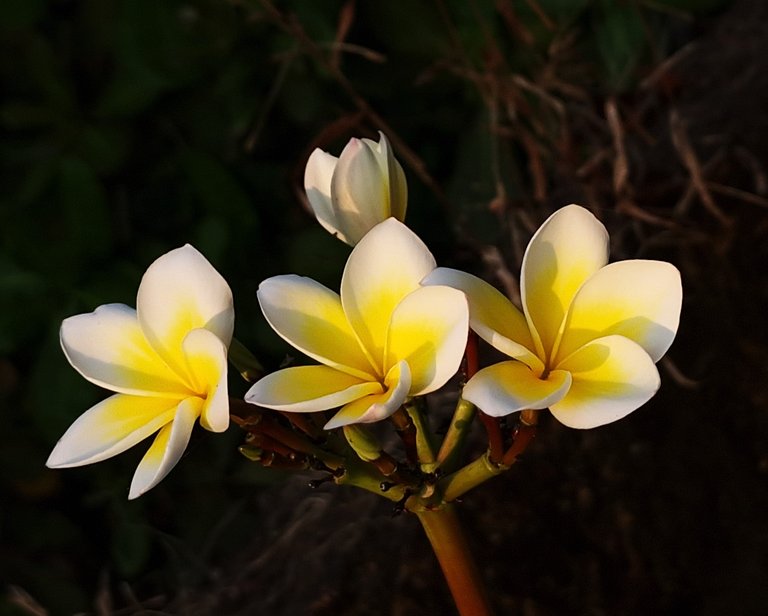
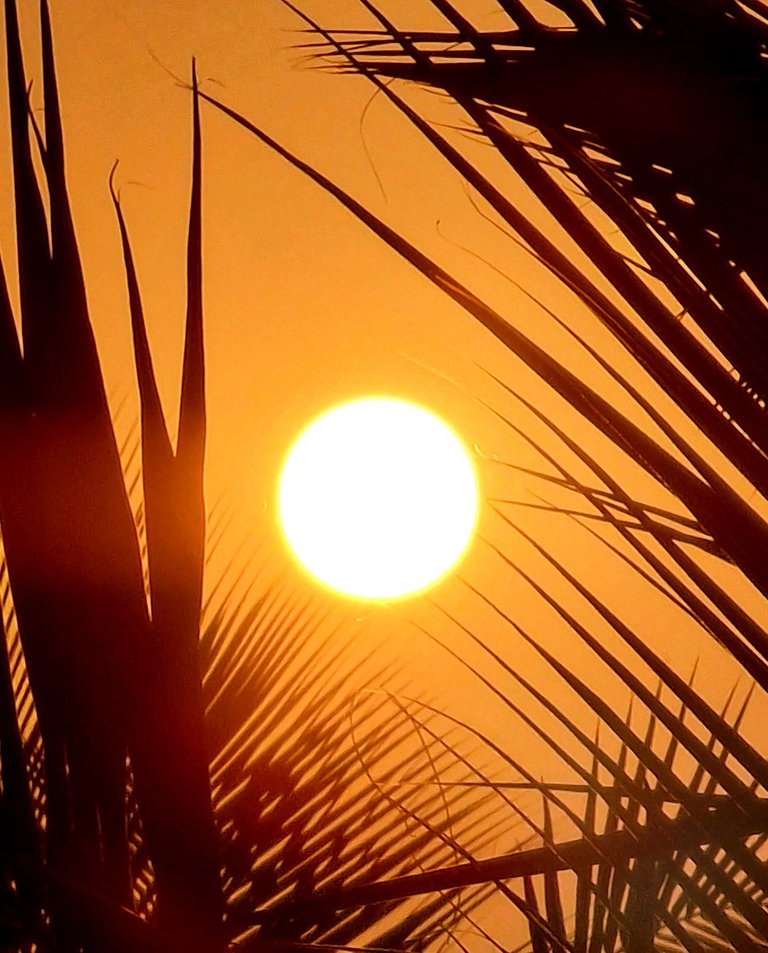 and at the end of the day we can usually count on a nice colorful sunset through the coconut palms
and at the end of the day we can usually count on a nice colorful sunset through the coconut palms
Sending Love and Ecency Curation Vote!
 Please Vote for our New Proposal! 🙏
Please Vote for our New Proposal! 🙏
thanks so much. your support is always greatly appreciated
I love this garden tour! You have so many trees and plants that are fascinating to someone like me who lives in the north. Hope the bee swarm find a great new home! ❤️
it's a totally different world than the north in many ways. the garden is great to have around us but it requires more upkeep than we are able to provide even though we have one helper. everything grows so fast in the warm sun. i think the bees will be fine despite all the challenges they face, not the least of which are the colorful bee-eaters we love to watch darting around and hopefully eating mosquitoes rather than bees
Wow, you have a beautiful garden with lots of plants. I love eating that coconut embryo when I'm opportune to get one. Star fruit yields well here in my city, but they're not my kind of fruit. I'd go for the coconut and the honeycomb, although I wouldn't have gotten close to those hot girls. 😅
The beautiful sunset was a testament of a productive day.
!BBH
thanks for the nice comment. i think the bees were too occupied with figuring out what to do so they were not in a stinging mood at all. i juust reached in the tree hollow and took out that honeycomb. i hope the queen bee was ok after the fall. it is great ot have the wild bees around the garden. they are vitaal for pollination
You're welcome. Yes, bees are very important creatures. Without them, some plants may not thrive well.
Wow! It was nice to see your garden pictures and all tree 😌
thanks a lot. there's plenty more that is too much to cover in a single post. now our main effort is harvesting cashews
That's great 👍
That's a wonderful garden tour. Those are some awesome natural foods.
thanks a lot. all the produce is organic of course. it's amazing what is able to thrive in pure sand, especially when the weather is hot, we cannot go barefoot in the middle of the day because the sand is burning hot
Yeah it's quite difficult work to produce those food.
Cool... I want try all this fresh food 👌☕😋
Great!
The HIVE GARDEN COMMUNITY supports gardening, homesteading, cannabis growers, permaculture and other garden or botanical related content. Delegations to the curation account, @gardenhive, are welcome! Find our community here!
https://www.reddit.com/r/flowers/comments/1lskwsw/flowers_from_the_garden/
This post has been shared on Reddit through the HivePosh initiative.